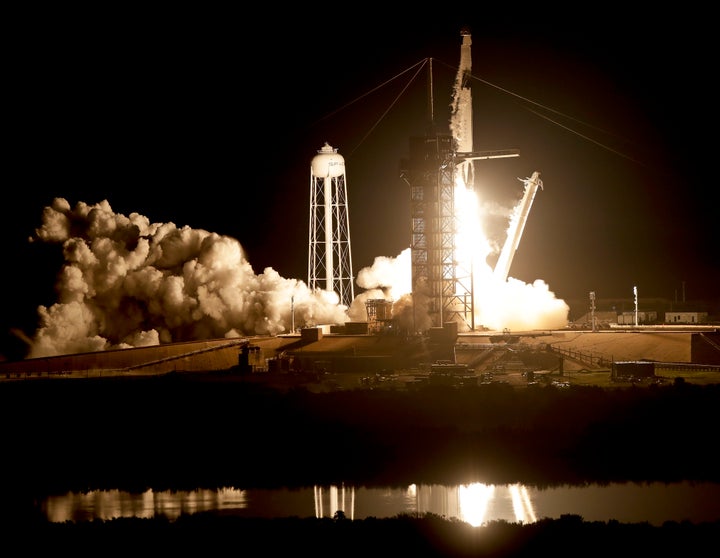America’s newest capsule for astronauts is rocketing towards the International Space Station on a test flight by SpaceX.
Some 5,000 Nasa and contractor employees, tourists and journalists gathered in the early hours at Kennedy Space Centre in Florida as the Falcon 9 rocket blasted off from the same spot where Apollo moon rockets and space shuttles once soared.
The only passenger is a life-size test dummy, named Ripley from the Alien movies.
It will spend five days docked to the orbiting outpost, before making a splashdown in the Atlantic next Friday.
“This is critically important,” said Nasa administrator Jim Bridenstine.

“We’re on the precipice of launching American astronauts on American rockets from American soil again for the first time since the retirement of the space shuttles in 2011.”
Across the country at SpaceX Mission Control in Hawthorne, California, company employees went wild, cheering every step of the way until the capsule successfully reached orbit.
Looking on from Kennedy’s Launch Control were the two Nasa astronauts who will strap in as early as July for the second space demo, Doug Hurley and Bob Behnken.
It has been eight years since Hurley and three other astronauts flew the last space shuttle mission, and human launches from Florida ceased.
Nasa turned to private companies, SpaceX and Boeing, providing them with funding to build and operate crew capsules to ferry astronauts to and from the space station.
Now Russian rockets are the only way to get astronauts to the 250-mile-high outpost. Soyuz tickets have skyrocketed over the years; Nasa currently pays 82 million US dollars per seat.
Boeing aims to conduct the first test flight of its Starliner capsule in April, with astronauts on board possibly in August.
SpaceX already has made 16 trips to the space station using cargo Dragons. The white crew Dragon is slightly bigger — 27 feet tip to tip — and considerably safer.
It features four seats, three windows, touch-screen computer displays and life-support equipment, as well as eight abort engines to pull the capsule to safety in the event of a launch emergency.
Solar cells are mounted on the spacecraft for electrical power, as opposed to the protruding solar wings on cargo Dragons.